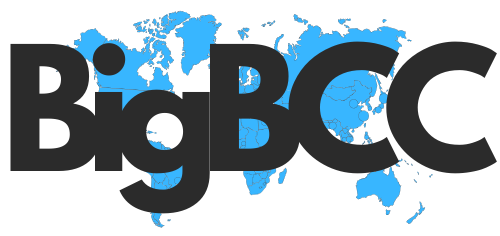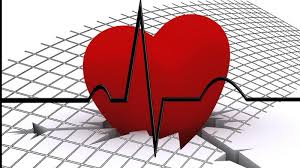Not too long ago, heart disease was largely thought of as something that caught up with you in your 50s or 60s. Today, however, the picture looks drastically different. Young Indians in their 20s, 30s and 40s are increasingly being diagnosed with serious heart conditions—a shift that cardiologists say is deeply worrying.
“Earlier, people would get diagnosed post 60 or probably after 50,” says Dr. Shyam Sasidharan. “But these days, it’s no longer an older person’s illness. If you look at global data, the incidence has plateaued in the West, but in lower and middle-income countries like ours, it’s actually skyrocketing.”
The numbers he shares are sobering. “Some studies in India show that around 10% of the adult population has coronary heart disease. Unlike in earlier times, where it was mainly the elderly, now about 40% of all people getting heart attacks in India are below 40 years of age. That is a very alarming statistic.”
The problem, he adds, is that most people don’t expect heart disease to strike at such a young age. “Because of that, there are delays in recognizing the symptoms and seeking treatment. The mortality is also higher. We’re losing youngsters in the prime of their lives.”
One of the biggest culprits is hypertension, which is increasingly common among the young. “By midlife, we are seeing deaths related to high blood pressure going up significantly,” Dr. Sasidharan points out. “The thing about hypertension—and other conditions like diabetes and dyslipidemia—is that they start off without symptoms. You don’t feel anything when they are high. You only realize it when a complication like a heart attack shows up.”
That’s what makes it dangerous. “Multiple studies have shown that people with uncontrolled high blood pressure live at least 35 years less than those without it. That’s almost double the risk. And it’s not just heart attacks. Hypertension also increases the chances of strokes and other complications. So, the longer it goes unchecked, the more the damage accumulates in the body.”
For Dr. Sasidharan, the most important message is that prevention trumps treatment. “It is beyond any doubt that we can treat many of these diseases once we have them,” he says. “But it is always better not to have them. More than 80% of cardiovascular problems are preventable—that’s the saddest part.”
He explains that there are two types of risk factors: modifiable and non-modifiable. “Non-modifiable ones are things like age, gender, or family history. But the modifiable ones—diabetes, hypertension, smoking, obesity, inactivity, stress, air pollution—these are in our hands. The culture of taking care of your own health, making the right choices, that’s what makes the difference.”
And he is clear about where prevention begins: “Children and young adults need to start early. Unless you build healthy habits from the beginning, the risks add up silently.”
For most people, the challenge isn’t a lack of information—it’s the willingness to act on it. “The world only gives us good health choices and bad health choices. And more often, we are tempted by the bad ones. Whether it’s food or exercise, the knowledge is with us. The question is—are we motivated enough to act? Prevention requires awareness, but more importantly, it requires motivation.”
What if someone wants to take charge and check their heart health early? “There are a number of non-invasive tests available today,” Dr. Sasidharan says. “ECG, echocardiography, treadmill test, stress echo, nuclear imaging—all of these can give us an idea of how the heart is functioning. More recently, CT coronary angiography provides a very detailed picture. And when required, angiograms still remain the gold standard.”
Blood tests also play a role. “Markers like LDL cholesterol, inflammation indicators—all of these help us assess overall risk. When you combine these results with history and examination, you can build a clear risk profile for each individual and decide the next steps.”
Even with these alarming trends, medicine is advancing at a pace that offers hope. “Earlier, multiple or long blockages usually meant bypass surgery, and sometimes even that wasn’t possible. But now, we have solutions to almost all kinds of heart ailments. Complex procedures, advanced angioplasty, intravascular imaging—these allow us to go inside the arteries and see exactly what’s happening. The precision of treatment has improved tremendously.”
When asked about diet trends like intermittent fasting, Dr. Sasidharan is cautious. “There’s a lot of talk about it, but we don’t yet have hard data to say if it’s good or bad for the heart. In general, long periods of fasting can be healthy, but in someone who already has heart disease, it can trigger complications. So it’s not one-size-fits-all.”
What we do know, he stresses, is the harm caused by processed foods. “Refined sugars are really bad for your heart. Even for non-diabetics, sugar is unnecessary—it has no nutritional value. Processed foods should be avoided. Freshly prepared meals, steamed or boiled rather than deep-fried, are far healthier.”
Dr. Sasidharan’s prescription for everyday heart health is simple: “Get moving. We are facing an obesity epidemic, and one big reason is how static our lives have become. Sitting for an additional one or two hours a day significantly affects your heart. At least 30 minutes of exercise five days a week, plus strength training twice a week if possible—that makes a huge difference.”
Sleep and stress management are equally critical. “Six to eight hours of quality sleep every night is essential. Work stress will always be there, but how you manage it is in your hands. All these small choices add up to big outcomes for your heart.”
Dr. Sasidharan warns, “Heart disease is not just about surgeries and stents. It’s about awareness, prevention, and lifestyle. If you take charge of your health early, most heart problems can be avoided.”
Watch the interview here:









